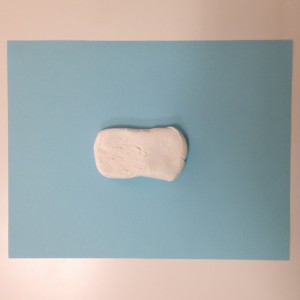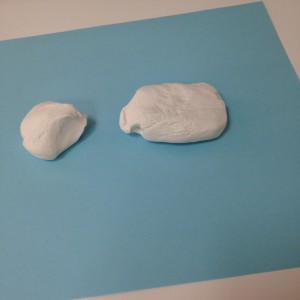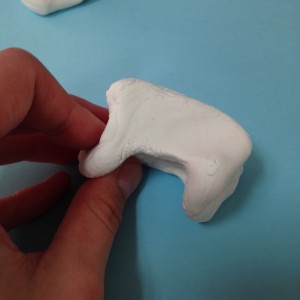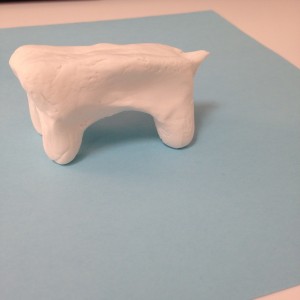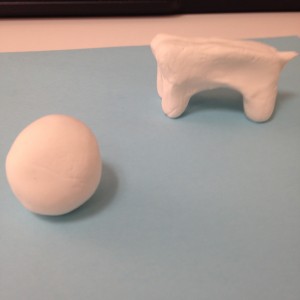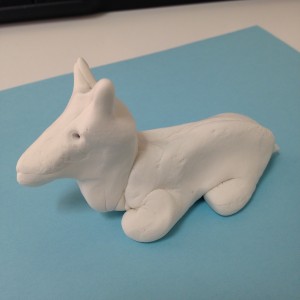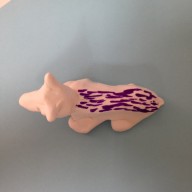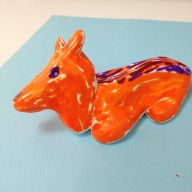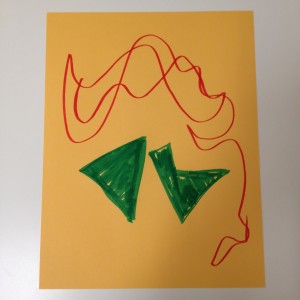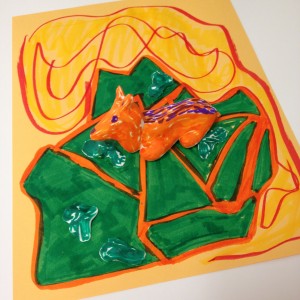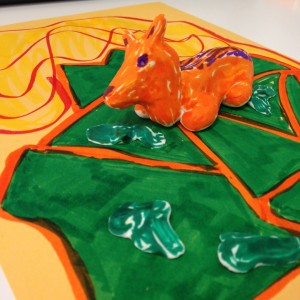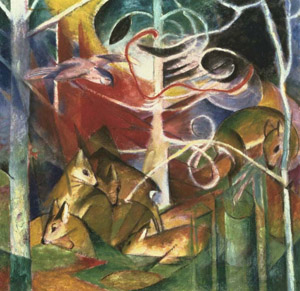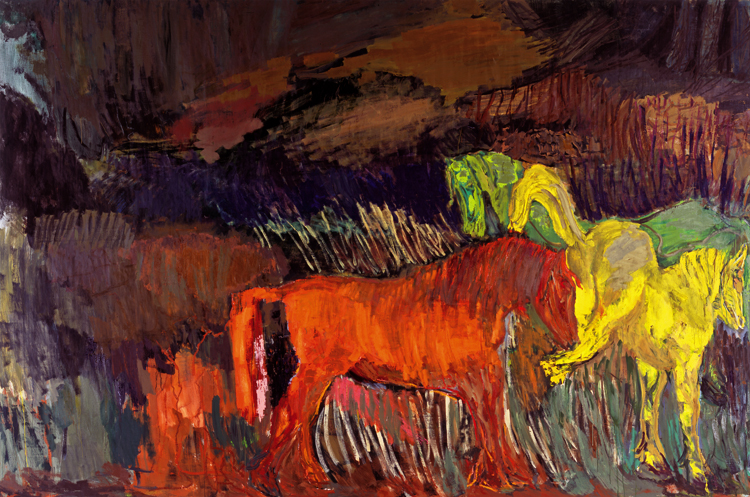Our third project of the Phillips-at-Home Summer Series features the artist Franz Marc and his work Deer in the Forest I. For this art activity, you are going to create an animal sculpture. What is a sculpture? A sculpture is a piece of artwork that can be viewed from any angle.
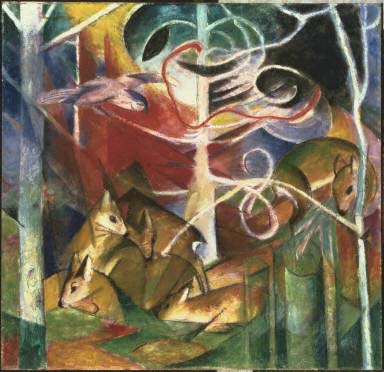
Franz Marc, Deer in Forest I, 1913, Oil on canvas, Framed: 43 in x 44 1/2 in x 2 3/4 in, Gift from the estate of Katherine S. Dreier 1953, The Phillips Collection, Washington, D.C.
Look closely: What do you notice in this painting? Franz Marc believed that colors could stir deep emotions. How do the colors make you feel? Is this a place you would like to visit? Why or why not?
About the Artist:
Franz Marc was born in Munich, Germany on February 8,1880. At the age of 20, he abandoned his studies in theology and philosophy to pursue a career in art at the Munich Academy (1900 to 1903). He travelled around Europe for several years until he settled in Sindelsdorf, Upper Bavaria (modern day Munich, Germany), in 1909. Two years later, Marc joined his friend and fellow artist Wassily Kandinsky as a member of the Neue Künstlervereinigung München, (New Artists’ Association, Munich). However, both artists resigned that same year and began planning the 1911 Blaue Reiter exhibition. During this planning period, Marc created his own personal color symbolism in which “Blue is the male principle, astringent and spiritual. Yellow is the female principle, gentle, gay and spiritual. Red is matter, brutal and heavy and always the color to be opposed and overcome by the other two.” How does knowing this information change your understanding of the painting? Marc’s promising career ended abruptly when he volunteered for military service at the beginning of World War 1. The Phillips Collection has one painting by Franz Marc.
WHAT YOU NEED:
- Model Magic
- Markers
- 1 sheet of construction paper
SUGGESTED AGE:
- Ages 4 and up
TIME FRAME:
- 1-2 hours to make; 2 days for your Model Magic to harden
STEPS:
1. Choose an animal that you would like to make into a sculpture. It can be anything from the forest animals that Franz Marc paints, to your favorite creature, to an imaginary creature.
2. Take the Model Magic out of the wrapper and break off a third of it. This piece will become the head of your creature. Put this smaller piece aside for later.
3. Begin molding the body of your creature with your hands; think about what your animal looks like. If you need help, refer to an image of your animal in a book or on the internet. Keep in mind: Does your animal have legs? Fins? A tail? Mold all of the features of your animal’s body.
4. Set the body aside and begin to mold the head. Does your animal have eyes? Ears? A big nose or a little nose? Once you have molded the head to your liking, gently apply pressure and attach it to the body of your animal. Does your animal have a neck? Smooth out the edges while thinking about how long your animal’s neck is.
5. You can either wait a day and a half or so for your Model Magic to harden in order to color it, or you can gently use your markers immediately. What color would you like your animal to be? Use those colored markers and begin applying it to your animal. As you are coloring your sculpture, think about details your animal might have, such as fur or stripes. Remember to color your entire animal since you can see a sculpture from all angles; you may have to allow the marker to dry for a couple of minutes before you pick up your animal.
6. Once you have colored your animal, set it aside. A great next step is creating your animal’s environment. Looking at Franz Marc’s approach, choose a piece of construction paper. You can begin creating organic shapes with your markers. What are organic shapes? They are shapes that look natural and maybe contain a variety of curvy and straight lines. Fill your paper with any environment you wish to have for your animal. If you have extra Model Magic, feel free to apply it to your environment on the paper and color it as well.
7. When you have finished your animal and its environment, place your animal in its new home!
A nice complement to this art project is Eric Carle’s The Artist Who Painted a Blue Horse.
Tune in regularly for another great art activity inspired by The Phillips Collection!
Julia Kron, K12 Education Intern


